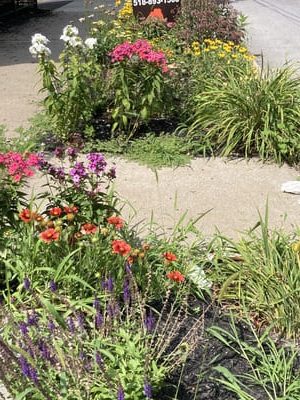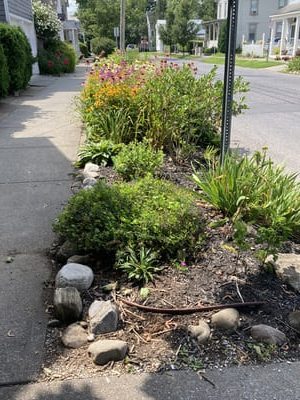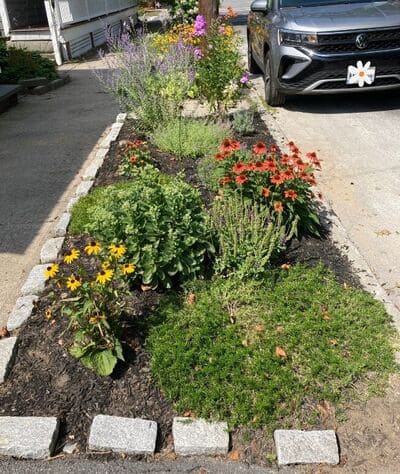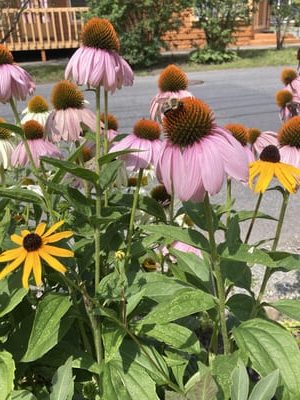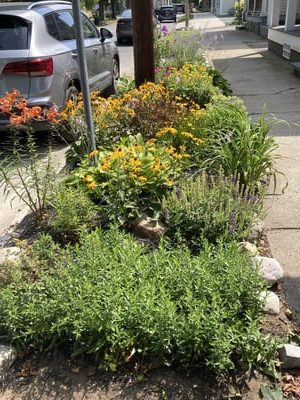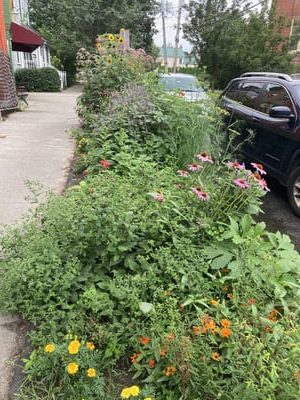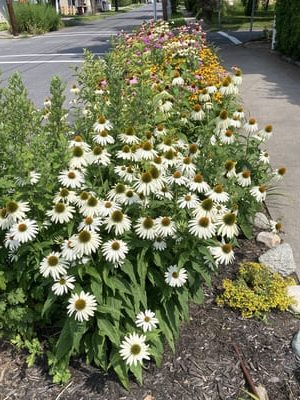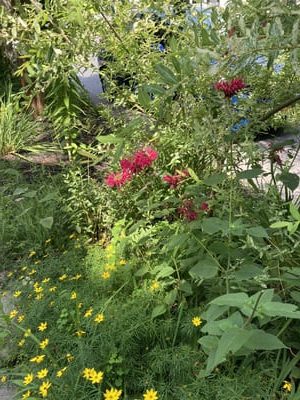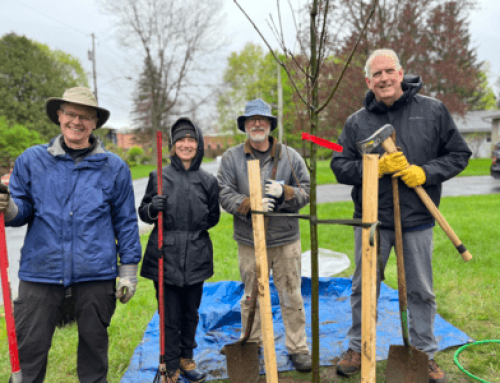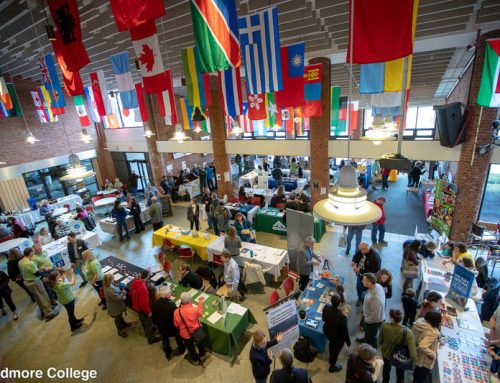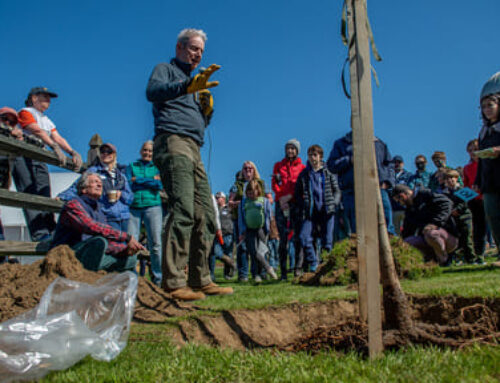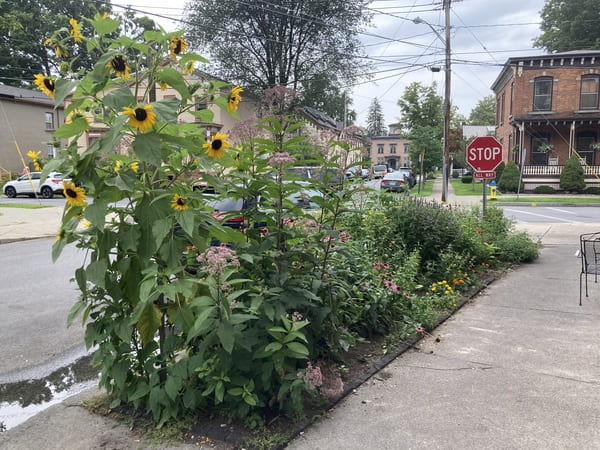
Are you a Hellstrip Hero?
Do you have a hellstrip – that strip between the curb and the sidewalk? It’s usually owned by the municipality, but property owners are responsible for maintaining it.
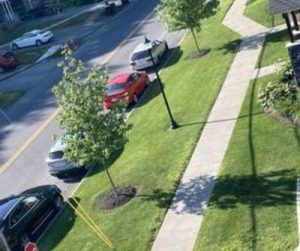 At worst, it may be filled with lush, green turf grass that is maintained using pesticides and chemical fertilizers, and soaking up precious water at an alarming rate. Or maybe it’s just a patch of dirt and weeds.
At worst, it may be filled with lush, green turf grass that is maintained using pesticides and chemical fertilizers, and soaking up precious water at an alarming rate. Or maybe it’s just a patch of dirt and weeds.
But we can do better.
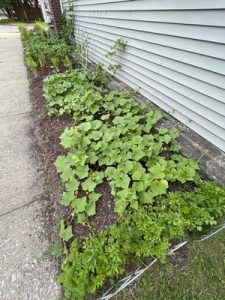 There are Hellstrip Helpers out there who have planted annuals or maybe even perennials or trees. Hopefully these plants aren’t being treated with chemicals and require less watering than turf grass, and they certainly add a touch of beauty to the neighborhood.
There are Hellstrip Helpers out there who have planted annuals or maybe even perennials or trees. Hopefully these plants aren’t being treated with chemicals and require less watering than turf grass, and they certainly add a touch of beauty to the neighborhood.
And, how about this one that’s been turned into a veggie patch!
And then there are the Hellstrip Heroes. We know you’re out there, and you have turned your Hellstrips into pollinator paradises, full of native plants that attract wildlife and don’t require watering, yet still manage to look beautiful to humans, too.
Here are just some that we’ve noticed around town
Show us your hellstrips! Post photos on social media and use the hashtag #hellstriphero

Are you ready to turn your Hellstrip into Pollinator Heaven? With a little planning and effort, you can be a Hellstrip Hero too!
Evaluate your site
Hellstrips present challenging conditions, especially if you live in an area with high vehicle or foot traffic. If you have any of these conditions, look for plants that can withstand them. Be sure to check local regulations. Your HOA and/or municipality may have rules about what can and can’t be planted.
- Snow and salt pile up in winter
- Compacted and/or poor soil
- Shade or blazing sun
- Lack of available water
- Dogs use it to do their business
Communicate and educate
Expect people to be curious. Talk to neighbors, HOA, and passers-by and let them know what you’re doing and why. Plant a sign to let people know what’s going on in your little plot.You can pick one up from us in Saratoga Springs ($25. Email pollinators@sustainablesaratoga.org for info) or by mail from the Xerces Society. Encourage neighbors to be Hellstrip Heroes too.
Plan and plant
You can follow the same process we outline in our post on How to Start a Native Pollinator Garden from Scratch
- Kill what’s there (smother or if you’re impatient like me, dig– see the post for details)
- Select plants appropriate for your conditions (see the post for plant lists)
- Important! Choose plants that will be appropriately sized when mature. Know their spreading height and spreading habits. A small, narrow strip may not be the best place for tall, floppy perennials or trees.
- Plant native plants. They provide habitat and food for wildlife, and after they are established they won’t need supplemental watering
- Plants or seeds? Plants get faster results; seeds are less expensive but require patience. You may not get full results for a couple of years.
- Yes you can plant under existing trees! Unlike turf grass, there are lots of natives that are happy to live in harmony with trees. Look for native woodland plants that suit your conditions.
Care for your little Strip of Heaven
- Weed out unwanted volunteer plants to give your young plants a chance. Soon they will be crowding and shading out the invaders.
- Water well during the first season, until they are established. Next year it shouldn’t be necessary.
- If you choose to use mulch while your plants fill in, make sure to keep it well away from tree trunks and plant stems. Use a natural, undyed mulch. Leaves or compost both work well and will break down over time, providing nutrients and improving the soil.
- Leave some bare ground for insects to overwinter near their host plants.
- Be a good neighbor: As your plants grow, make sure the sidewalk and street/curb edges remain clear and passable.
Once your little patch is established and blooming, you will start to get visits from all kinds of wildlife. It’s fun to keep track of visitors by using an app, such as iNaturalist. Remember that the plants are there to provide habitat and food, so expect to see munched leaves and insects curling up in them. That’s what they are there for!
Resources
Blog posts
Create a native pollinator garden from scratch, Planning your pollinator garden, Growing native species for pollinators throughout the year
Heavenly Hellstrips from the Ladybird Johnson Wildflower Center
Book
Hellstrip Gardening by Evelyn J Hadden. It’s available to borrow through the Saratoga Springs Public Library and other libraries.

